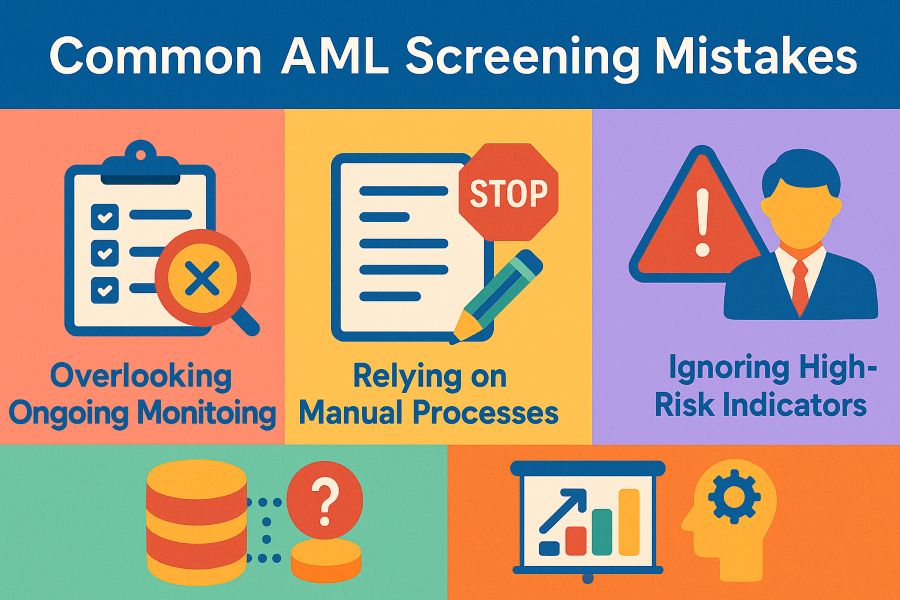Common AML Screening Mistakes and How to Prevent Them

Failing to detect suspicious activity early can expose your business to financial crime and regulatory penalties. Many organisations still rely on outdated or inconsistent anti-money laundering (AML) processes that create gaps in compliance and increase risk.
Understanding where most AML screening mistakes occur helps you take control before problems escalate. Stay to the end of our article to learn how to identify these pitfalls and make sure your business isn’t making any costly mistakes.
Overlooking Ongoing Monitoring
One of the most frequent AML mistakes is treating screening as a one-off task rather than a continuous process. It’s not enough to verify customers only at the onboarding phase, since financial behaviour can change over time.
Regular monitoring ensures your systems flag new risks such as sanctions updates, political exposure, or adverse media.
Modern AML checks powered by intelligent technology automate these updates and deliver real-time alerts. This means your compliance team doesn’t waste time on repetitive manual reviews, but still catches potential risks as soon as they arise.
Relying on Manual Processes
Manual data entry and paper-based verification increase the chance of human error. Details might be mistyped or missed entirely, leading to inaccurate reports or incomplete records. Manual checks also slow down onboarding, frustrating clients and compliance officers alike.
Using a secure digital verification platform streamlines your workflow while maintaining high accuracy. Smart data capture forms and biometric ID verification features make compliance faster and more reliable.
The result is a consistent process that meets regulatory standards without compromising customer experience.
Ignoring High-Risk Indicators
Another common issue is failing to recognise red flags such as unusual transactions or links to politically exposed persons (PEPs). These oversights often happen when teams rely on outdated data or incomplete screening lists.
The UK’s Financial Conduct Authority (FCA) expects firms to demonstrate active risk management and evidence of enhanced due diligence for high-risk clients.
Digital AML tools help prevent these lapses by cross-referencing multiple trusted data sources automatically. They also keep records securely stored in the cloud, allowing compliance teams to show clear audit trails during inspections.
Using Inconsistent Data Sources
Not all data sources are equally reliable or up to date. Some organisations still use spreadsheets or local databases that don’t synchronise with official registries. This inconsistency can result in missed sanctions or inaccurate client profiles.
Choosing a trusted provider ensures your AML screening draws from official and frequently updated databases. A reliable provider integrates multiple sources, including the UK sanctions list and PEP registries, so you can make informed decisions with confidence.
Neglecting Staff Training
Even with advanced systems in place, human oversight remains vital. Poor staff training can lead to missed alerts or incorrect document handling. Compliance officers must understand how to interpret reports, respond to flagged risks, and update internal procedures.
Training should be regular and practical, using real examples of common errors. Combining skilled staff with smart automation ensures your compliance strategy remains both accurate and adaptable.
Building a Stronger AML Framework
Effective AML compliance depends on consistency, accuracy, and visibility. Digital-first screening platforms simplify these areas by automating identity verification, maintaining secure audit records, and reducing human error.
By moving away from manual processes and adopting intelligent AML checks, you’ll save time, reduce costs, and protect your business from compliance breaches.
When you focus on prevention rather than correction, AML compliance becomes less of a burden and more of a business advantage.



